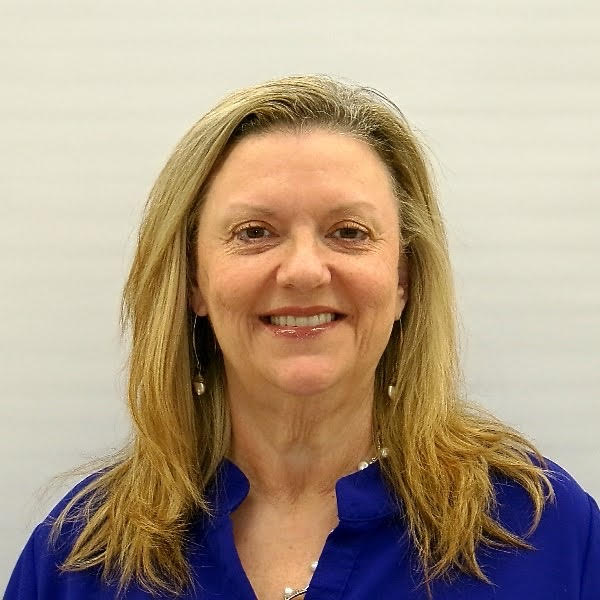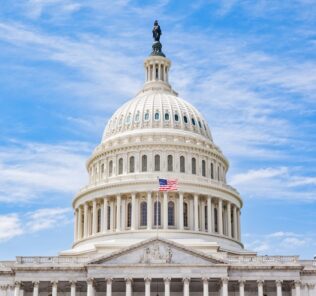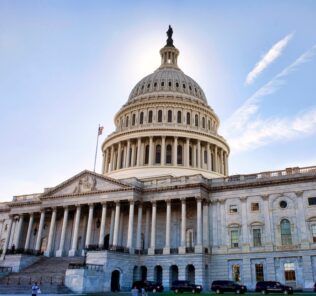Support U.S. House Bill HR 7591 to Establish A National Patient Safety Board
Improving patient safety should be a priority for healthcare providers, healthcare institutions, academic institutions training healthcare providers, and the public. On March 8, 2024, U.S. Reps. Nanette Barragán and Dr. Michael Burgess, members of the Energy and Commerce Subcommittee on Health, reintroduced the National Patient Safety Board Act (H.R. 7591). H.R. 7591 supports legislation that would establish a National Patient Safety Board (NPSB). This HealthySimulation.com article by Teresa Gore, PhD, DNP, APRN, FNP-BC, CHSE-A, FSSH, FAAN, will discuss legislation for a National Patient Safety Board and how simulation can improve patient safety, and how U.S. citizens can support this bill with an automatic Representative emailing tool shared below!
US House Bill H.R. 7591: Establish A National Patient Safety Board (NPSB) Act
H.R. 7591 National Patient Safety Board is a bipartisan bill. The bill was written and introduced by Nanette Barragán (CA-44 Democrat), an attorney, and Dr. Michael Burgess (TX-26 Republican), an OB-GYN physician. Politics and political agendas should be set aside to improve all US citizens’ health, health outcomes, and patient safety.
Sponsored Content:
H.R. 7591, landmark legislation, is a critical step to improve safety for patients and healthcare providers by coordinating existing efforts within a single independent agency solely focused on addressing patient safety in health care. The NPSB would be a nonpunitive, collaborative, and independent board within the Department of Health and Human Services to address safety in health care modeled in part after successful entities in the transportation industry.
The NPSB’s data-driven solutions would prevent harm before harm occurs and reduce the burden on frontline teams. The NPSB would aggregate and analyze existing patient safety data collected across HHS agencies to gain national insights. No government entity is tasked with looking at patient safety nationwide; NPSB would fill this gap. A coalition of over 90 leading healthcare organizations and stakeholders is on board. So, now is the time to act.
According to the World Health Organization (WHO), Patient Safety “is the absence of preventable harm to a patient during the process of health care and reduction of risk of unnecessary harm associated with health care to an acceptable minimum.” Common healthcare errors include patients receiving the wrong medications, contracting hospital-acquired infections, having the wrong body part removed during surgery, receiving an incorrect diagnosis, or having a missed diagnosis or treatment.
Despite significant advances in patient care within the United States and around the world, the number of patients harmed while receiving health care is still unacceptably high. The WHO estimates that patient harm is the 14th leading cause of morbidity and mortality around the world.
Sponsored Content:
Call to Action: Email Your Representative Through Easy Form
Reach out to your U.S. House member’s office to ask for their support on the National Patient Safety Board Act, which creates a National Patient Safety Board to focus on bringing stakeholders together and collectively implementing solutions to prevent medical harms. Quickly submit an email to your representative here.
View the LEARN CE/CME Platform Webinar Using Medical Simulation to Intentionally Probe Healthcare Systems: What’s It All About? to learn more!
Input from Leaders in Patient Safety and Healthcare Simulation
“Patient safety problems cause significant preventable suffering in our country. We can and must do better. Solutions exist, but we need leadership and smart policy to bring them together wisely. That’s why I’m so grateful to Representative Barragan and Representative Burgess as well as the Pittsburgh Regional Health Initiative for championing the NPSB. All of us at Leapfrog who grade hospitals on patient safety, including our cadre of employers and patient advocates demanding patient safety for over 20 years, look forward to working together with you to make sure patients always come first.” – Leah Binder, MA, MGA, president and chief executive officer, The Leapfrog Group
“Patient safety is our number one priority for every decision we make as a health system. As a High-Reliability Organization, we strive for a culture of safety that results in the best possible patient outcomes, every time. This legislation is welcome news both for patients everywhere and healthcare leaders like us who are committed to continually improving the quality of clinical care.” – Stephen R.T. Evans, MD, executive vice president and chief medical officer, MedStar Health
“My family experienced two separate medical errors that resulted in brain damage to my newborn son and the death of my husband. The realization that no one was in charge of collecting data about my family’s harms, learning from those harms and developing solutions to prevent future harms was chilling. We can no longer look the other way. A National Patient Safety Board will collect such data, learn from that data, and expedite the development of solutions so that everyone engaged in health care are as safe as possible as soon as possible.” – Sue Sheridan, MIM, MBA, DHL, founding member, Patients for Patient Safety US
How Can Healthcare Simulation Improve Patient Safety?
One of the major reasons for healthcare simulation is to improve patient safety and outcomes. Clinical simulation has been linked to improved patient safety and patient outcomes through deliberate practice and application of knowledge in a safe environment to learners for mistakes without potential harm to a patient.
The majority of healthcare medical error issues are related to a breakdown in communication. Healthcare simulation is an excellent way to practice communication skills for individuals and teams (intraprofessional and interprofessional).
The role of healthcare simulation in improving patient safety expands every year however, persuading hospital and clinic administrators to increase funding for simulation may be challenging. Simulation in Healthcare helps create High-Reliability Organizations (HROs): HROs are organizations that have the potential for catastrophic failure yet engage in nearly error-free performance. The healthcare industry differs considerably from HROs, such as the airline industry, because of the variation in healthcare settings, the focus in healthcare on patients rather than machines, and the fact that failures occur to individuals rather than mass casualties. Extensive investigation and publicity follow major airline crashes, whereas individual adverse patient events do not receive the same attention.
Healthcare simulation can help create a safety culture. Simulation can help create a proactive environment that is blame-free. Simulation training is offered to individuals, teams, and larger units, and scenarios are created that match clinical situations that providers find the most problematic. Simulation can be used to identify situations that can potentially cause harm before they occur in actual practice. Educators know that simulation can produce moments of clarity for learners that will improve their future practice.
Learn More About House Bill 7591: Establish A National Patient Safety Board Act!
Teresa Gore, PhD, DNP, APRN, FNP-BC, CHSE-A, FSSH, FAAN – Dr. Gore has experience in educating future nurses in the undergraduate and graduate nursing programs. Dr. Gore has a PhD in Adult Education, a DNP as a family nurse practitioner, and a certificate in Simulation Education. Dr. Gore is an innovative, compassionate educator and an expert in the field of healthcare simulation. In 2007l Teresa started her journey in healthcare simulation. She is involved in INACSL and SSH. She is a Past-President of INACSL and is a Certified Healthcare Simulation Educator Advanced (CHSE-A). In 2018, she was inducted as a Fellow in the American Academy of Nursing (FAAN). In 2021, she was inducted as a Fellow in the Society of Simulation in Healthcare Academy (FSSH) and selected as a Visionary Leader University of Alabama at Birmingham School of Nursing Alumni. During her career, Dr. Gore has led in the development and integration of simulation into all undergraduate clinical courses and started an OSCE program for APRN students. Her research interests and scholarly work focus on simulation, online course development and faculty development. She has numerous invited presentations nationally and internationally on simulation topics.
Sponsored Content:


















